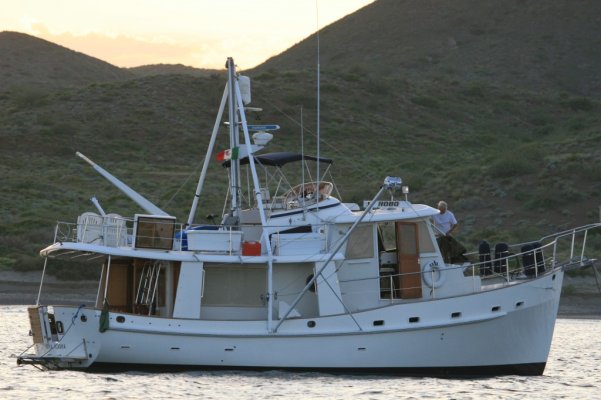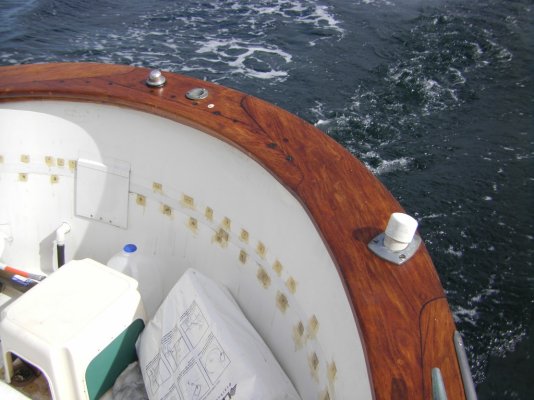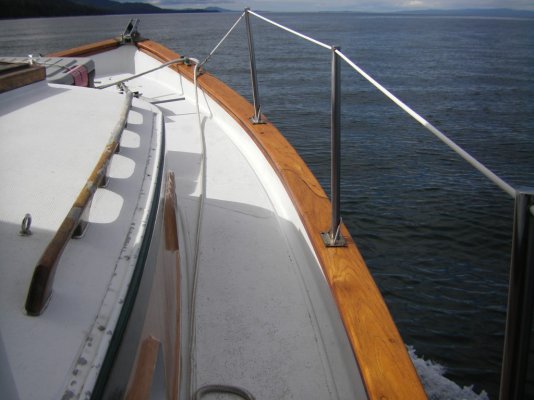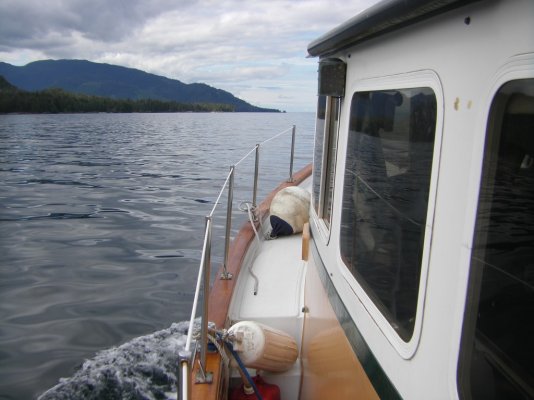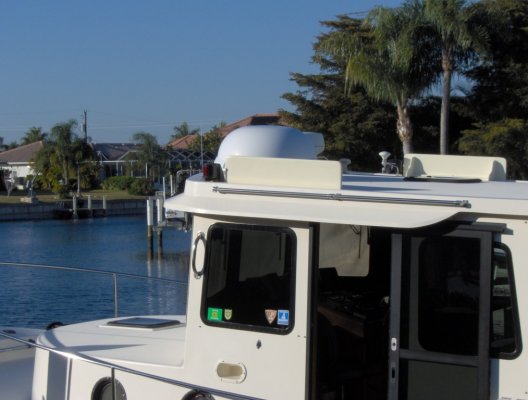Teak provides a superior deck surface in terms of traction, wet or dry, and I think it looks a lot better than non-skid fiberglass, steel, etc. The problem with a teak deck is not the teak but the way they were installed until very recently. The planks were bedded in an adhesive sealant but for absolute security they were screwed into the deck with five zillion screws. New boats, like the current Grand Banks models, glue the teak decking down so the integrity of the subdeck is preserved and no moisture can get into it no matter what happens with the planking on top of it.
If I was having a boat built of fiberglass or metal and had the option (and could afford) to have a teak deck glued down, I would take this any day over a non-skid paint, gelcoat, or other applied non-skid surface. But I would never accept having the teak screwed down.
The big issue today is cost. Quality teak (not plantation teak which is very unstable in terms of its reaction to moisture and has a relatively low oil content compared to old-growth teak) is incredibly expensive. In 1998 having new teak planking installed on a Grand Banks 36 was between $20,000 and $30,000 depending on who you got the bid from. Today, I imagine it is at least half again as much, partly because of the increased cost of labor but mainly because of the skyrocketing cost of quality teak.

